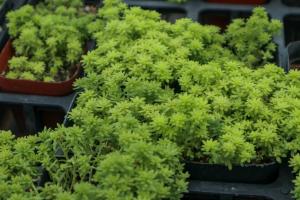Do You Take Plant Out of Plastic Pot?
Plants are a great addition to any home or garden. They add beauty, purify the air, and can even boost your mood. When it comes to caring for your plants, one important decision you will need to make is whether or not to take them out of their plastic pots. Here are some things to consider:
The Pros of Leaving Plants in Plastic Pots
There are a few reasons why you might choose to leave your plants in their plastic pots:
Convenience: Plastic pots are lightweight and easy to move around, making them a convenient choice for plants that need to be rotated or moved regularly.
Drainage: Many plastic pots come with drainage holes, which are essential for preventing overwatering and keeping your plants healthy.
Avoiding Root Shock: Moving a plant from one pot to another can be stressful for the plant, as its roots may become damaged or disturbed. Leaving the plant in its original plastic pot can help it adjust more easily to its new environment.
The Cons of Leaving Plants in Plastic Pots
However, there are also some downsides to keeping plants in plastic pots:
Root Bound: Plants that are left in their plastic pots for too long can become "root bound," meaning their roots become cramped and tangled. This can lead to slower growth and decreased health.
Limited Nutrients: Plastic pots aren't porous like terra cotta or clay pots, so they don't allow air and water to pass through the walls. This can lead to a buildup of salts and minerals in the soil, which can make it harder for the plant to absorb nutrients.
Aesthetic Concerns: Let's face it, plastic pots aren't always the most attractive option. If you have a beautiful plant that you want to show off, you might consider repotting it into a more decorative container.
When to Repot Your Plants
So, when should you repot your plants?
When they become root bound: If you see roots coming out of the bottom of the pot, it's time to repot.
When the soil begins to break down: As soil ages, it can become depleted of nutrients and break down, making it difficult for plants to grow. If you notice that the soil in your plant's pot is breaking down or becoming compacted, it's time to repot.
When you want to give your plant a fresh start: If you've had your plant for a long time and it's not looking as healthy as it used to, or if you simply want to give it a new look, repotting can be a great option.
How to Repot Your Plants
If you decide to repot your plant, here are the steps to follow:
Choose a new pot that is slightly larger than the old one.
Carefully remove the plant from its old pot, taking care not to damage the roots.
Gently loosen the root ball to encourage new growth.
Add fresh potting soil to the new pot, filling it about halfway.
Place the plant in the new pot, making sure the top of the root ball is level with the top of the pot.
Add more potting soil around the sides of the plant, gently firming it down as you go.
Water the plant well, making sure the soil is evenly moist.
With these tips in mind, you can make an informed decision about whether to take your plants out of their plastic pots. Whether you choose to repot or not, the most important thing is to provide your plants with the care and attention they need to thrive.

 how many times do yo...
how many times do yo... how many planted tre...
how many planted tre... how many pine trees ...
how many pine trees ... how many pecan trees...
how many pecan trees... how many plants comp...
how many plants comp... how many plants can ...
how many plants can ... how many plants and ...
how many plants and ... how many pepper plan...
how many pepper plan...































